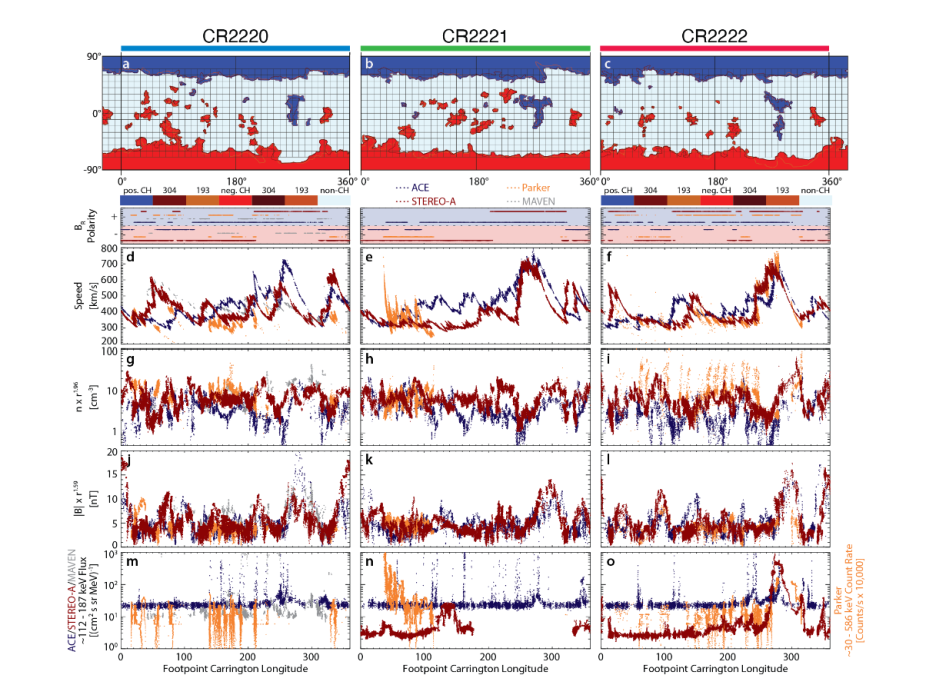Three Carrington rotations during the Whole Heliosphere and Planetary Interactions Interval
JGR - Space Physics: The Whole Heliosphere and Planetary Interactions initiative (WHPI) was established to lever age relatively quiet intervals during solar minimum to better understand the interconnectedness of the various domains in the heliosphere. This study provides an expansive mosaic of observations spanning from the Sun, through interplanetary space, to the magnetospheric response and subsequent effects on the ionosphere-thermosphere-mesosphere (ITM) system. To accomplish this, a diverse set of observational datasets are utilized from 2019 July 26 to October 16 (i.e., over three Carrington rotations, CR2220, CR2221, and CR2222) with connections of these observations to the more focused studies submitted to this special issue. Particularly, this study focuses on two long-lived coronal holes and their varying impact in sculpting the heliosphere and driving of the magnetospheric system. As a result, the evolution of coronal holes, impacts on the inner heliosphere solar wind, glimpses at mesoscale solar wind variability, magnetospheric response to these evolving solar wind drivers, and resulting ITM phenomena are captured to reveal the interconnectedness of this system-of-systems.

(a-c) McIntosh style coronal hole maps based on SDO observations along with (d-f) solar wind velocity, (g-i) density, (j-l) magnetic field magnitude, and (m-o) energetic particle abundance ballistically backtracked to the solar surface (2.5 Rs) for Parker (orange), ACE (navy), STEREO-A (maroon), and MAVEN (grey). The panel between the McIntosh style coronal hole maps and solar wind velocity denotes the average polarity of the radial component of the IMF (i.e., the sign of BR) at the observer to infer connection region. For visibility, the BR polarity is offset between the spacecraft within either positive (“+”, de- noted with blue background) or negative (“-”, denoted with red background) polarity regions, consistent with the color coding of polarity in the McIntosh maps.